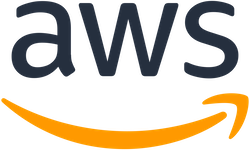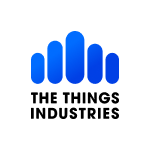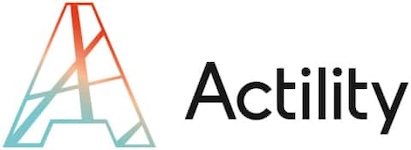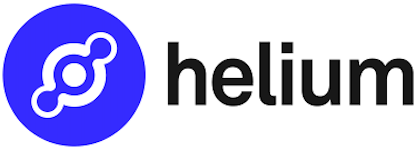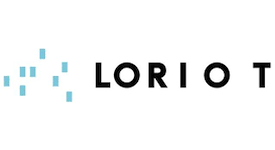In this Article
Discover 2024’s top LoRaWAN Network Server in this comprehensive guide.
In the rapidly evolving world of Internet of Things (IoT), LoRaWAN (Long Range Wide Area Network) has emerged as a pivotal technology, enabling a myriad of devices to connect over long distances with minimal power consumption. As we step into 2024, the landscape of LoRaWAN network servers is more diverse and dynamic than ever, offering a range of solutions tailored to various needs and challenges of IoT connectivity.
This comprehensive overview delves into the forefront of LoRaWAN technology, highlighting the top providers shaping the IoT world in 2024. We have explored the intricacies of prominent LoRaWAN servers from leading companies like AWS, Azure, The Things Industries, Actility, Senet, Helium, Loriot, and ChirpStack. Each provider is scrutinised for their strengths, weaknesses, and unique features, offering a holistic view of the current market landscape.
Our discussion reveals a fascinating dichotomy between traditional, established players and innovative, emerging platforms. For instance, AWS and Azure LoRaWAN servers stand out for their seamless integration with expansive cloud services, offering robust scalability and security. On the other hand, providers like Helium are redefining the network paradigm with decentralized, blockchain-based models, incentivizing network expansion through cryptocurrency.
Open-source platforms like ChirpStack and The Things Industries are lauded for their flexibility and community-driven development, presenting cost-effective solutions with high customisation potential. Meanwhile, companies like Actility and Loriot are noted for their global coverage and advanced IoT network management features, catering to a wide spectrum of industrial and urban applications.
As we analyze the pricing models, we notice a trend towards usage-based and tiered pricing structures, accommodating the diverse needs of businesses, from startups to large enterprises. The assessment of these various providers offers invaluable insights for businesses seeking to navigate the complexities of IoT connectivity. We also note that pricing is not readily available from many providers without further exploration.
In conclusion, our exploration into the top LoRaWAN Network Servers of 2024 provides a comprehensive guide for businesses and technologists. Whether you’re a small startup or a multinational corporation, understanding the capabilities, advantages, and limitations of these servers is crucial for leveraging IoT’s full potential and driving innovation in an increasingly connected world.
Read on as we delve deeper into each provider, offering detailed insights to help you make the most informed decision for your IoT needs
AWS LoRaWAN Network Server
AWS LoRaWAN Server is a managed service provided by Amazon Web Services (AWS) that enables users to connect and manage wireless devices using the Long Range Wide Area Network (LoRaWAN) protocol. LoRaWAN is a low-power, wide-area networking protocol designed to wirelessly connect battery-operated devices to the Internet in regional, national, or global networks. AWS LoRaWAN server offers a seamless integration with other AWS services, allowing for easy data processing, storage, and analysis.
The service simplifies the process of setting up a LoRaWAN network, removing the complexities typically associated with managing such a network. It enables users to easily register their LoRaWAN devices with the network, and route the data transmitted by these devices to AWS IoT Core and other AWS services for processing and analysis.
Strengths:
- Ease of Use: AWS LoRaWAN server simplifies the deployment and management of LoRaWAN networks, making it accessible even to those with limited technical expertise in this area.
- Scalability: As with most AWS services, the LoRaWAN server is highly scalable, allowing users to expand their network as needed without significant changes to the infrastructure.
- Integration with AWS Services: The service integrates seamlessly with other AWS offerings, such as AWS IoT Core, Amazon S3, and AWS Lambda, facilitating advanced data processing, analytics, and storage solutions.
- Security: AWS ensures high levels of security for data transmission and storage, which is critical for IoT applications that often deal with sensitive data.
- Global Reach: AWS’s extensive infrastructure ensures that users can deploy LoRaWAN networks on a global scale.
Weaknesses:
- Cost: While AWS provides a scalable solution, the cost can escalate quickly with increased usage, which might be a concern for small businesses or startups.
- Complexity of AWS Ecosystem: For users not familiar with AWS services, the initial learning curve can be steep.
- Dependence on Internet Connectivity: Being a cloud-based service, AWS LoRaWAN server relies on internet connectivity, which could be a limitation in remote areas.
- Vendor Lock-In: Using AWS LoRaWAN server might lead to dependence on AWS services, making it challenging to migrate to a different provider in the future.
Customers:
AWS LoRaWAN server is used by a wide range of customers, from startups to large enterprises. Industries that typically use LoRaWAN technology include agriculture, smart cities, environmental monitoring, healthcare, and logistics. Customers choose AWS LoRaWAN for its scalability, security, and integration capabilities.
Major customers include Compliance Mate for food safety monitoring, CrisisGo for school safety, Quext for smart building management.
Pricing Model:
AWS typically follows a pay-as-you-go pricing model, which means the cost depends on the usage. Pricing factors may include the number of messages sent through the network, the number of connected devices, and the use of additional AWS services. It’s important for potential customers to review the latest pricing details on the AWS website or contact AWS directly for a more tailored cost estimate based on their specific needs and usage patterns.
TTN LoRaWAN Network Server
The Things Network provides a comprehensive LoRaWAN server solution, part of the broader suite of services known as The Things Stack. This platform is designed to facilitate the deployment, management, and scaling of LoRaWAN networks. LoRaWAN, or Long Range Wide Area Network, is a protocol for low-power, long-range IoT (Internet of Things) networks. The Things Industries’ server is an enterprise-grade solution that supports the management of LoRaWAN gateways and devices, ensuring secure, scalable, and efficient connectivity for IoT applications.
The platform is distinguished by its open-source foundation and its ability to integrate with a variety of cloud services and IoT applications. It offers features like end-to-end encryption, multi-tenancy, and support for various regional frequency plans, catering to a diverse set of IoT use cases.
Strengths:
- Open-Source Foundation: The Things Industries LoRaWAN Server’s open-source nature encourages transparency, community contributions, and flexibility in customizing the solution to specific needs.
- Scalability: It supports a large number of devices and gateways, making it suitable for both small-scale and large-scale deployments.
- Security: The server offers robust security features, including end-to-end encryption and secure device management, which are crucial for IoT networks.
- Interoperability: Due to its adherence to standard LoRaWAN protocols, it can easily integrate with a wide range of devices and third-party services.
- Customizability and Flexibility: The platform can be tailored to specific use cases and integrates well with existing IT infrastructure and cloud services.
Weaknesses:
- Complexity for Beginners: The depth of features and customization options can be overwhelming for beginners or smaller organizations without dedicated IT teams.
- Reliance on Community Support: While the open-source nature is a strength, it also means that users might need to rely heavily on community support for troubleshooting and advanced configurations.
- Cost for Enterprise Features: While there is a free version, enterprise features come at a cost, which might be prohibitive for small businesses or startups.
Customers:
The Things Industries serves a diverse customer base, including small and medium enterprises, large corporations, and public sector organizations. It is particularly popular in sectors like smart cities, industrial IoT, logistics, agriculture, and energy, where managing a vast array of devices over large areas is crucial.
Major customers include KoolZone for environmental monitoring, Barani Design for weather prediction, Bosch for smart city development, and InVue for retail security solutions.
Azure LoRaWAN Network Server
Azure LoRaWAN Server, provided by Microsoft Azure, is a cloud-based service designed to facilitate the deployment and management of Long Range Wide Area Network (LoRaWAN) for Internet of Things (IoT) applications. LoRaWAN is a protocol for low-power, long-range IoT devices, and Azure’s offering integrates this technology with its cloud services, providing a robust and scalable platform for IoT connectivity and data management. The service is part of Azure’s IoT solutions, ensuring seamless integration with Azure’s suite of cloud services including Azure IoT Hub, Azure IoT Central, and Azure Stream Analytics.
Azure LoRaWAN Server allows users to connect, manage, and secure LoRaWAN devices, and easily route data from these devices to various Azure services for processing, analysis, and storage. This integration makes it a compelling solution for a range of IoT applications in various sectors.
Strengths:
- Integration with Azure Ecosystem: Seamless integration with other Azure services provides a comprehensive environment for IoT data processing, analytics, and storage.
- Scalability: Leveraging Azure’s cloud infrastructure, the server can scale to support a large number of devices and massive data volumes, suitable for both small-scale and enterprise-level deployments.
- Security: Azure provides robust security features, including secure connectivity, data encryption, and compliance with various regulatory standards, which is essential for IoT deployments.
- Global Reach: Azure’s extensive global infrastructure ensures wide geographical coverage, allowing deployment of LoRaWAN networks in multiple regions.
- User-Friendly Interface: The platform typically offers a user-friendly interface, making it easier for users to manage their LoRaWAN networks and connected devices.
Weaknesses:
- Complexity and Learning Curve: The wide array of features and integration options can be overwhelming for new users or small teams without in-depth Azure expertise.
- Cost: While offering a scalable solution, the pricing can escalate with increased usage, making it potentially expensive for high-volume deployments.
- Vendor Lock-In: Utilizing Azure LoRaWAN Server might lead to dependence on Azure’s ecosystem, which could limit flexibility and increase migration costs if switching to another provider.
- Internet Dependency: Being a cloud-based solution, it requires consistent internet connectivity, which might not be feasible in remote or unstable network areas.
Customers:
Azure LoRaWAN Server is targeted towards a wide range of customers including enterprises, public sector organizations, and startups. It is particularly useful in industries like smart cities, agriculture, logistics, healthcare, and environmental monitoring, where managing a large network of IoT devices is crucial.
Pricing Model:
Azure follows a pay-as-you-go pricing model, and the cost for using the Azure LoRaWAN Server would depend on several factors such as the number of connected devices, the volume of data processed, and the use of additional Azure services. The pricing structure can be complex, and potential users should consult the latest pricing details on the Azure website. Azure may also offer customised pricing plans for large-scale deployments or specific enterprise requirements.
Actility LoRaWAN Network Server
Actility’s LoRaWAN Server is a prominent solution in the realm of Internet of Things (IoT) connectivity, focusing on Low Power Wide Area Network (LPWAN) technology. LoRaWAN, which stands for Long Range Wide Area Network, is a protocol specifically designed for long-range, low-power IoT applications. Actility, a leader in this field, offers a LoRaWAN server that is part of their ThingPark Wireless platform, providing an enterprise-grade, scalable, and secure way to manage IoT networks and data.
ThingPark Wireless is renowned for its robustness and adaptability, supporting a wide range of IoT applications. It enables businesses to deploy, manage, and scale their IoT networks efficiently, with a focus on optimizing operational costs and enhancing data security. The server’s compatibility with a variety of LoRaWAN devices and its integration capabilities with multiple IoT platforms and applications make it a versatile choice for various industry needs.
Strengths:
- Scalability and Reliability: Actility’s server can handle large-scale deployments, making it suitable for both small projects and large enterprise applications. Its reliability is a key factor for businesses relying on IoT solutions.
- Security: It offers robust security features, ensuring safe data transmission and compliance with industry standards, which is crucial for IoT networks handling sensitive information.
- Flexible Integration: The server’s ability to integrate with various cloud services and IoT platforms allows for a more comprehensive and versatile IoT ecosystem.
- Global Coverage: Actility’s partnerships with multiple network operators worldwide ensure wide coverage, benefiting deployments that span multiple regions.
- Professional Support and Services: Actility provides professional support and additional services, aiding businesses in deploying and managing their IoT solutions effectively.
Weaknesses:
- Complexity for Non-Experts: The depth of features and technical aspects of the server might be challenging for users without a strong background in IoT or networking.
- Cost Structure: For small businesses or startups, the cost of enterprise-grade features might be a barrier, especially when considering scaling up their operations.
- Dependency on Actility’s Ecosystem: While it provides a comprehensive solution, users may become reliant on Actility’s ecosystem, potentially limiting flexibility in choosing different IoT service providers.
Customers:
Actility’s customer base spans a variety of sectors, with notable utilization in smart cities, industrial IoT, agriculture, energy, and healthcare. Its solutions cater to businesses looking for robust and scalable IoT network management, from small startups to large multinational corporations. Public sector organizations also employ Actility’s solutions for various smart city and environmental monitoring applications.
Pricing Model:
Actility adopts a tiered pricing model, where the cost depends on the scale of the deployment, the number of connected devices, and the level of services and support required. While basic packages may be suitable for small-scale or pilot projects, larger deployments with advanced needs would necessitate more comprehensive, and thus more expensive, plans. The company offers customised pricing for large-scale deployments or specific enterprise needs. Potential customers are advised to contact Actility directly or consult their website for the most current pricing information and to get a quote tailored to their specific requirements.
Senet LoRaWAN Network Server
Senet LoRaWAN Server is a cloud-based service offered by Senet, a leading provider in the Internet of Things (IoT) network space. Specializing in Low Power Wide Area Network (LPWAN) technology, Senet’s LoRaWAN (Long Range Wide Area Network) server is designed to support and manage IoT applications requiring long-range, low-power wireless connectivity. The platform is notable for its large public network coverage and a flexible deployment model that caters to a variety of IoT use cases, ranging from asset tracking to environmental monitoring.
Senet’s server provides a scalable and secure way to connect, manage, and orchestrate IoT devices and data. It allows users to deploy their own LoRaWAN networks or connect to Senet’s existing public network, enabling the collection and transmission of data from connected devices to the cloud for processing and analysis. This integration is particularly beneficial for applications requiring wide-area coverage and long battery life for devices.
Strengths:
- Extensive Network Coverage: Senet boasts one of the largest public LoRaWAN network deployments, offering extensive coverage that is beneficial for applications requiring broad geographic reach.
- Scalability: The platform can efficiently handle both small-scale and large-scale deployments, making it suitable for a wide range of businesses and applications.
- Flexibility and Customization: Senet provides flexible deployment options, including public, private, and hybrid network models, catering to specific business needs and compliance requirements.
- Integration with Cloud Services: The server integrates seamlessly with various cloud platforms, enhancing data management and analysis capabilities.
- Strong Security Features: Senet ensures secure data transmission and adherence to industry standards in data security and privacy.
Weaknesses:
- Complexity for Beginners: The platform’s wide range of features and technical aspects might be overwhelming for users new to IoT or LoRaWAN technology.
- Pricing Model: While offering scalable solutions, the cost can be a consideration for startups or smaller businesses, especially when scaling up operations.
- Dependency on Network Coverage: The effectiveness of the service is contingent on the coverage of Senet’s network, which may be limited in certain geographic areas.
- Vendor Lock-In Potential: Utilizing Senet’s platform could lead to a degree of vendor lock-in, limiting flexibility in integrating with other IoT service providers or networks.
Customers:
Senet’s customer base is diverse, encompassing sectors like smart cities, agriculture, utilities, and asset tracking. Their solutions are tailored for businesses seeking reliable and scalable IoT network management, ranging from small enterprises to large industrial players. They also cater to municipalities and government entities for public infrastructure and environmental monitoring applications.
Pricing Model:
Senet generally employs a usage-based pricing model, where costs are aligned with the scale of deployment and usage levels. This can include factors like the number of connected devices, data transmission frequency, and additional services like data analytics and cloud storage. While basic plans might be adequate for smaller or pilot projects, more extensive deployments with higher data needs will require more comprehensive plans, which are more costly. Customized pricing solutions are also available for specific enterprise requirements or large-scale deployments. For the most accurate and updated pricing information, potential customers should directly contact Senet or consult their website.
Helium LoRaWAN Network Server
Helium LoRaWAN Network Server represents a unique approach in the realm of Internet of Things (IoT) connectivity, focusing on a decentralized, blockchain-based network. Helium, often referred to as “The People’s Network,” leverages LoRaWAN (Long Range Wide Area Network) technology, which is ideal for low-power, long-range IoT applications. What sets Helium apart is its innovative use of blockchain technology to create a decentralized and crowd-sourced network of LoRaWAN hotspots provided by individuals and businesses. These hotspots provide network coverage while earning cryptocurrency (Helium tokens) for the network participants.
This model enables rapid expansion of network coverage with reduced infrastructure costs. Helium’s LoRaWAN Server facilitates the connection and management of IoT devices, allowing for data transmission across its widespread network. This server is part of the broader Helium ecosystem, which includes integrated blockchain technology for secure and transparent operations.
Strengths:
- Decentralized Network Model: Helium’s unique crowd-sourced approach reduces the need for large-scale infrastructure investment, making it cost-effective and rapidly scalable.
- Cryptocurrency Incentives: The use of Helium tokens as a reward system incentivizes network expansion and maintenance, contributing to the network’s growth and sustainability.
- Wide Coverage: The increasing adoption of Helium hotspots results in extensive network coverage, beneficial for IoT applications requiring broad geographic connectivity.
- Low Power Consumption: Leveraging LoRaWAN technology, Helium is ideal for devices requiring low power consumption and long battery life.
- Ease of Use and Accessibility: The Helium network is designed to be user-friendly, allowing easy setup and management of IoT devices.
Weaknesses:
- Dependence on Network Growth: The network’s effectiveness is contingent on the continuous expansion and distribution of hotspots, which might be uneven in certain geographic areas.
- Volatility of Cryptocurrency: The reliance on cryptocurrency for network incentives can introduce volatility and uncertainty, particularly in regulatory and valuation aspects.
- Complexity for Traditional Businesses: The blockchain aspect and the cryptocurrency model might be complex or unfamiliar to traditional businesses, potentially affecting adoption.
- Data Throughput Limitations: While suitable for low-bandwidth IoT applications, Helium might not be ideal for use cases requiring high data throughput.
Customers:
Helium’s customer base is diverse, including both individual consumers who host hotspots and businesses leveraging the network for various IoT applications. Key sectors include smart cities, supply chain and logistics, agriculture, environmental monitoring, and more. The platform is particularly appealing to organisations and startups focusing on innovative IoT solutions and those looking to reduce infrastructure costs.
Major Customers include a partnership with Dish Network for network expansion. Claims of major customers like Lime and Salesforce were found to be false.
Pricing Model:
The cost to participate in the Helium network primarily involves the initial investment in a Helium hotspot, which varies based on the manufacturer and model. There are no traditional subscription fees; instead, network usage is facilitated through Helium tokens, which are earned by providing network coverage or can be purchased. The dynamic nature of cryptocurrency pricing adds a variable element to the cost considerations. For businesses looking to deploy IoT solutions on the Helium network, the main expenses would be related to the purchase of compatible IoT devices and any associated operational costs. It’s advisable for interested parties to research the current market prices of Helium hotspots and tokens for a more accurate cost assessment.
Loriot LoRaWAN Network Server
Loriot is a global IoT company that offers a professional and secure LoRaWAN network server solution, designed to meet the needs of businesses and organizations deploying Internet of Things (IoT) applications. The Loriot LoRaWAN server provides a comprehensive platform for managing LoRaWAN networks, enabling users to connect, manage, and secure a wide range of IoT devices over long distances. LoRaWAN (Long Range Wide Area Network) is known for its low power consumption and long-range capabilities, making it ideal for IoT applications that need to transmit small amounts of data over long distances.
The Loriot server is recognized for its high reliability, scalability, and user-friendly interface. It supports various deployment models, including public, private, and hybrid networks, and offers advanced features like multi-tenancy, end-to-end encryption, and robust data management tools. This makes it suitable for a diverse range of applications, from smart city infrastructure to industrial monitoring and agricultural technology.
Strengths:
- High Scalability and Reliability: Loriot’s server is designed to handle large-scale deployments, ensuring reliable connectivity even in extensive networks.
- Advanced Security Features: It offers robust security measures, including end-to-end encryption and secure device management, which are critical for protecting sensitive IoT data.
- Flexible Deployment Options: The platform supports various deployment models, accommodating different business needs and compliance requirements.
- Global Coverage: Loriot has a strong global presence, offering wide network coverage, which is beneficial for international operations and applications.
- User-Friendly Interface: The platform provides an intuitive interface, simplifying network management and device configuration for users.
Weaknesses:
- Complexity for Beginners: The platform’s range of features and technical depth might be challenging for users new to IoT or LoRaWAN.
- Cost Structure: While offering a robust solution, the pricing can be a consideration for small businesses or startups, especially when scaling operations.
- Vendor Lock-in Potential: Using Loriot’s platform could lead to reliance on their ecosystem, potentially limiting flexibility in integrating with other IoT service providers.
- Dependency on Network Infrastructure: The effectiveness of the service relies on the underlying network infrastructure, which may vary in different regions.
Customers:
Loriot’s customer base is quite diverse, encompassing sectors such as smart cities, industrial IoT, agriculture, environmental monitoring, and utilities. The platform is suitable for businesses and organisations of all sizes, from small startups to large enterprises, looking for a reliable and scalable solution for managing their IoT networks.
Pricing Model:
Loriot employs a tiered pricing model, with costs varying based on factors like the scale of the deployment, the number of connected devices, and the level of services and support required. Basic plans are generally sufficient for smaller or pilot projects, while larger deployments with more complex needs will require more comprehensive, and thus more expensive, plans. Custom pricing solutions may also be available for specific enterprise requirements or large-scale deployments. For accurate and up-to-date pricing information, potential customers are encouraged to contact Loriot directly or visit their website, as prices may fluctuate based on market conditions and customer needs.
Chirpstack LoRaWAN Network Server
ChirpStack LoRaWAN Network Server is an open-source network server solution designed for managing LoRaWAN networks, a protocol widely used in the Internet of Things (IoT) for long-range, low-power communication. Developed by ChirpStack (formerly known as LoRaServer), it provides a robust platform for connecting, managing, and securing IoT devices using LoRaWAN technology. ChirpStack is recognized for its flexibility and scalability, making it an attractive choice for a wide range of IoT applications, from industrial monitoring to smart city infrastructure.
The server facilitates the deployment of both private and public LoRaWAN networks and supports features like multi-tenancy, device management, and data routing to various applications and services. Its open-source nature allows users to customize the platform to their specific needs and integrate it seamlessly with other software and cloud services.
Strengths:
- Open-Source Model: The open-source nature of ChirpStack allows for a high degree of customization, community support, and continuous improvement of the platform.
- Flexibility and Scalability: ChirpStack is designed to cater to both small-scale and large-scale deployments, making it suitable for various business needs.
- Cost-Effectiveness: Being open-source, it reduces the initial investment costs compared to proprietary solutions.
- Integration Capabilities: The platform can be integrated with multiple cloud services and IoT applications, enhancing its functionality and usability.
- User-Friendly Interface: Despite its depth of features, ChirpStack offers a user-friendly interface for managing networks and devices.
Weaknesses:
- Technical Expertise Required: The flexibility and customization potential of ChirpStack might demand a higher level of technical expertise, which can be a barrier for users with limited technical resources.
- Community-Based Support: While there is an active community for support, the lack of dedicated professional support services might be a drawback for some businesses.
- Dependence on Network Infrastructure: The effectiveness of ChirpStack largely depends on the underlying network infrastructure, which can vary in performance and reliability.
- Complex Setup for Beginners: Initial setup and customization can be complex and time-consuming for beginners or smaller organizations.
Customers:
ChirpStack’s customer base is diverse, ranging from tech startups and SMEs (Small and Medium Enterprises) to larger organizations and public sector entities. It is particularly appealing to those who are looking for a cost-effective, customisable solution for IoT projects, including smart agriculture, urban planning, industrial monitoring, and environmental sensing.
major customers include companies like SmartParks, RAK Wireless, and Reese.
Pricing Model:
Since ChirpStack is open-source, it is available free of charge, which significantly reduces the costs associated with software licensing. However, users may incur costs related to hosting the server (if choosing a cloud-based hosting solution), purchasing LoRaWAN gateways and devices, and any additional customization or integration services they might need. For larger businesses or those requiring professional support, additional costs may be involved if they choose to hire external consultants or developers. Furthermore, while the software itself is free, operating a network on a larger scale will likely involve infrastructure and maintenance costs that need to be considered. Potential users should assess these indirect costs to estimate the total cost of ownership based on their specific deployment scale and requirements.
LoRaWAN Network Server Rankings
This table ranked each LORAWAN Network server and compares various LoRaWAN server providers, highlighting their strengths, weaknesses, and pricing models. yes you might have guessed it, the order that the LoRaWAN Servers were presented is the order in which we ranked them.
| # | Name | Strengths | Weaknesses | Pricing Model |
|---|---|---|---|---|
| 1 | AWS LoRaWAN Server | Ease of Use, Scalability, AWS Integration, Security, Global Reach | Cost, Complexity, Internet Dependency, Vendor Lock-In | Pay-as-you-go, Usage-Based |
| 2 | The Things Industries LoRaWAN Server | Open-Source, Scalability, Security, Interoperability, Customizability | Complexity for Beginners, Reliance on Community, Cost for Enterprise Features | Tiered Pricing, Usage-Based |
| 3 | Azure LoRaWAN Server | Azure Integration, Scalability, Security, Global Reach, User-Friendly Interface | Complexity, Cost, Vendor Lock-In, Internet Dependency | Pay-as-you-go, Usage-Based |
| 4 | Actility LoRaWAN Server | Scalability, Advanced Security, Flexible Integration, Global Coverage, Professional Support | Complexity for Non-Experts, Cost Structure, Dependency on Actility’s Ecosystem | Tiered Pricing, Custom Pricing for Enterprises |
| 5 | Senet LoRaWAN Server | Extensive Network Coverage, Scalability, Flexibility, Cloud Integration, Strong Security | Complexity for Beginners, Pricing Model, Network Coverage Dependency, Vendor Lock-In Potential | Usage-Based Pricing, Variable Based on Scale |
| 6 | Helium LoRaWAN Server | Decentralized Network, Cryptocurrency Incentives, Wide Coverage, Low Power Consumption, Ease of Use | Network Growth Dependence, Cryptocurrency Volatility, Complexity for Traditional Businesses, Data Throughput Limitations | Initial Hotspot Purchase, Cryptocurrency Based, No Traditional Subscription Fees |
| 7 | Loriot LoRaWAN Server | High Scalability, Advanced Security, Flexible Deployment, Global Coverage, User-Friendly Interface | Complexity for Beginners, Cost Structure, Vendor Lock-in Potential, Network Infrastructure Dependency | Tiered Pricing, Custom Pricing for Enterprises |
| 8 | ChirpStack LoRaWAN Server | Open-Source, Flexibility, Cost-Effectiveness, Integration Capabilities, User-Friendly Interface | Technical Expertise Required, Community-Based Support, Network Infrastructure Dependence, Complex Setup for Beginners | Free (Open-Source), Indirect Costs for Hosting and Maintenance |
This table provides a quick overview of each provider, aiding in understanding their unique offerings and potential considerations for different IoT applications and business needs.
Conclusion
In this post we delved into the world of LoRaWAN servers, exploring various providers including AWS, The Things Industries, Azure, Actility, Senet, Helium, Loriot, and ChirpStack. Each provider was analysed in terms of their strengths, weaknesses, and pricing models, providing a comprehensive overview of the current LoRaWAN server landscape.
We discovered that while there are commonalities in terms of offering scalable, secure, and efficient IoT connectivity solutions, each provider has unique features and approaches. For instance, AWS and Azure integrate seamlessly with their respective cloud ecosystems, Helium offers a novel decentralized network with cryptocurrency incentives, and open-source platforms like ChirpStack and The Things Industries offer high customizability and community support.
This information is crucial for businesses and organizations to make informed decisions when choosing a LoRaWAN server provider, balancing factors like cost, scalability, security, and specific IoT application requirements. It’s clear that the choice of a LoRaWAN server provider will significantly impact the deployment and success of IoT solutions across various industries.
If you have any more questions or need further assistance in the future, feel free to ask!
Related Blog Posts
How Smart Cities Connect: Getting Started with Edge AI and IoT Technology
How to Get Started with Edge AI and IoT Technologies in Smart Cities: Overcoming Integration Challenges In recent years, the concept of smart cities has evolved from a futuristic Read More
5 Step Strategy: Ensuring Security and Privacy in 15-Minute Smart Cities
Introduction Ensuring security and privacy in 15-minute smart cities is a critical challenge as urban areas become increasingly connected through IoT and edge AI technologies. These cities aim to Read More
What is a smart city and the challenge of legacy systems
How to Get Started with Integrating Legacy Systems in Smart Cities Smart cities are transforming urban landscapes by leveraging technology to improve the quality of life for residents. However, Read More


